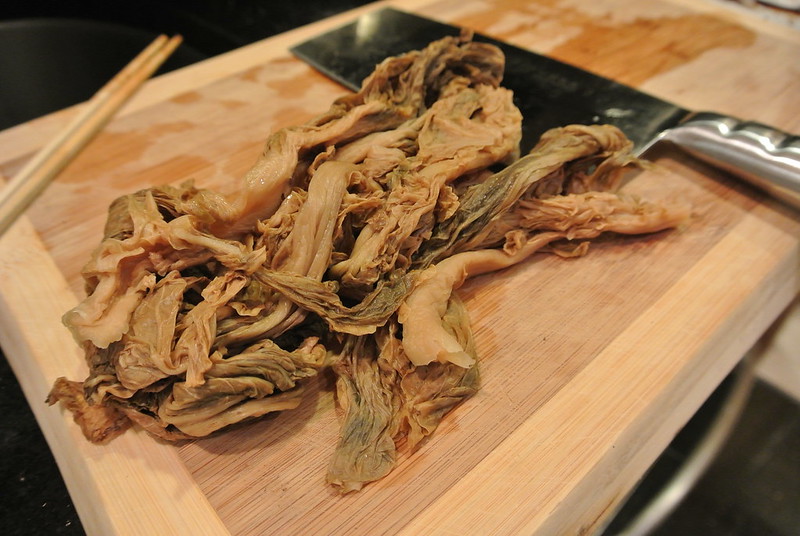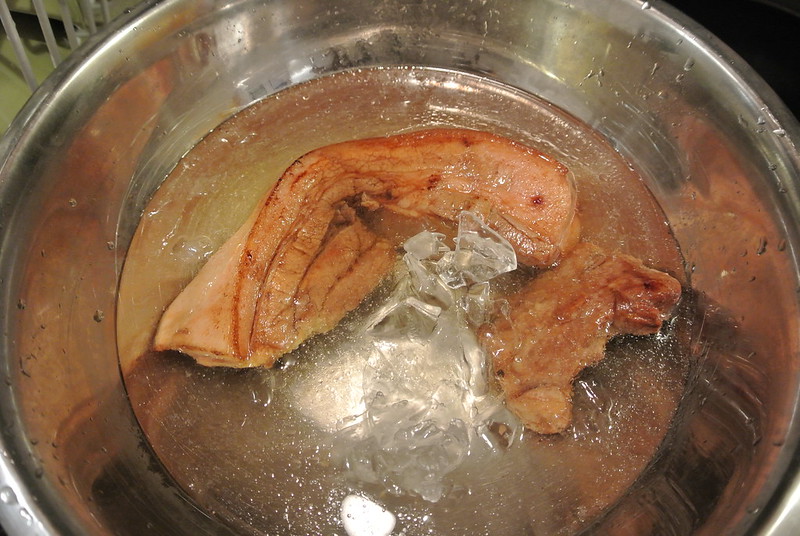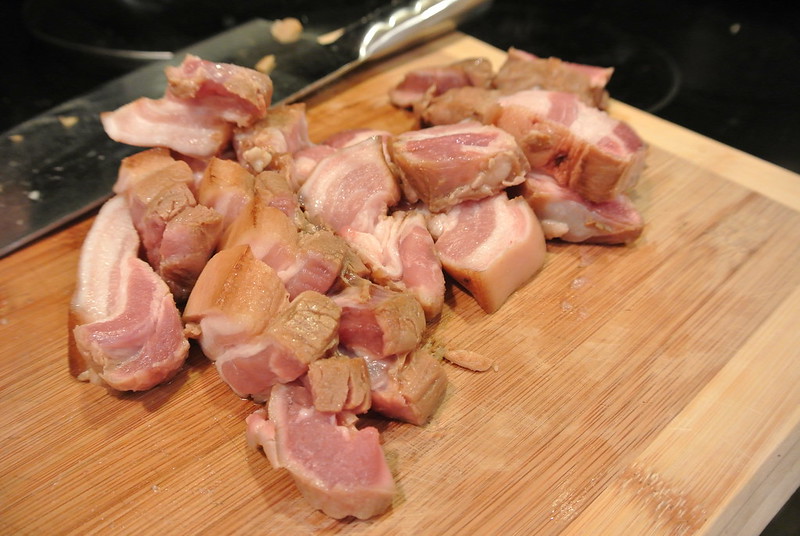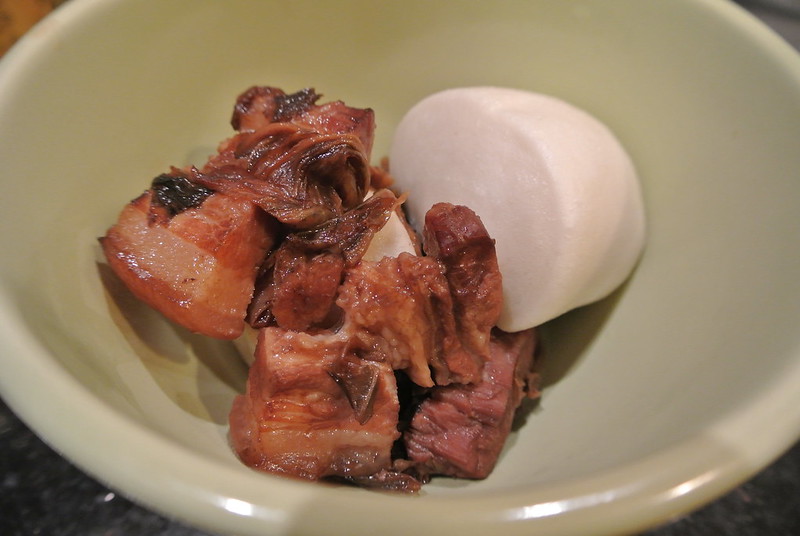Preserved Mustard Greens Braised Pork Belly 梅菜扣肉
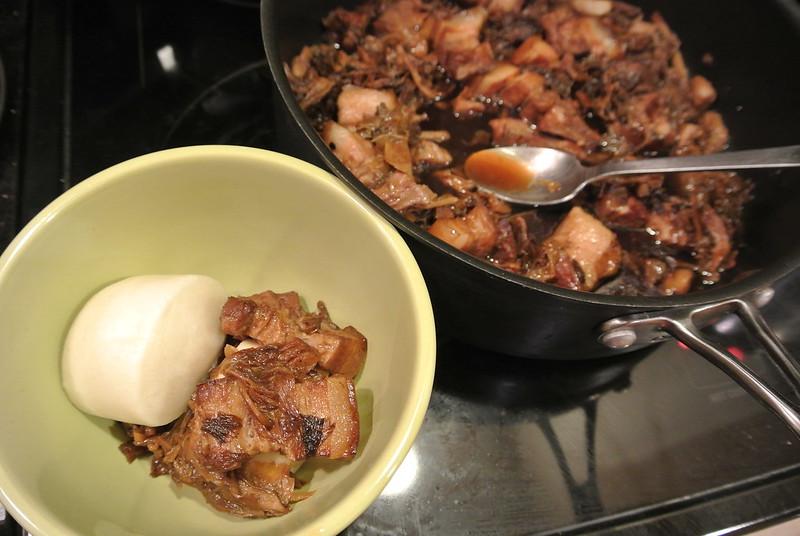 |
| It goes very well with steamed buns! |
When I was in Hong Kong, I caught part of a TV program that exposed the lives of everyday people with everyday jobs. This one particular special was an owner of a cha chan tang, a Hong Kong styled diner, that specialized in braised pork belly with preserved mustard green (mui choi). I watched the owner sizzle giant slabs of pork belly and dunk them in an ice bath as he prepared the salted mustard greens. I was surprised because it is such a process, yet this dish is so commonly eaten. I never thought of all the work that goes behind the multitude of choices at a cha chan tang. After I watched that special, I naturally craved mui choi kou yuk all the time, so I finally go to make some for myself. And it was not bad at all. It was actually very flavorful and quite authentic, if I do say so myself.
Note: when purchasing the preserved mustard greens, go to the dried good section. Also, if there's a Hakka brand, go for that one. It's the most traditional.
--Edit: I don't think I made it clear enough how good this dish is and how necessary it is to be served with either steamed buns or hot rice. I hope it's clear now.
Note: when purchasing the preserved mustard greens, go to the dried good section. Also, if there's a Hakka brand, go for that one. It's the most traditional.
--Edit: I don't think I made it clear enough how good this dish is and how necessary it is to be served with either steamed buns or hot rice. I hope it's clear now.
 |
| This tastes best as a leftover. |
Preserved Mustard Greens Braised Pork Belly 梅菜扣肉
6-8oz preserved mustard green
2lb pork belly
6 cloves garlic
1 chunk ginger, slivered
1 star anise
5 tbs dark soy sauce
5 tbs Chinese cooking rice wine
1/2 tsp brown sugar
3 tbs canola oil
1/2 cup water
ice bath (~3 cups)*
1. An hour before cooking, soak the mustard greens in a bowl of water. This removes all the visible salt from the greens and makes it a lot more manageable to cook with.
2. While the mustard greens are soaking, marinate the slab of pork belly with about 3tbs of dark soy sauce.
3. After about an hour, prepare the ice bath.
4. Heat the oil in a pan and sear the pork belly until browned on all sides. Remove the pork from the pan and insert into the bath. Keep the oil and the pan on the side.
5. In the meantime, remove and wring out the mustard greens. Chop into small pieces.
6. Reheat the pan with the oil and stir fry the chopped mustard greens, garlic, and ginger. Once the garlic and ginger are slightly brown, add the soy sauce, water, sugar, and star anise. Bring to a light boil. Add minute amounts of water and soy sauce until the taste is right.
7. As you are waiting for the sauce to boil, remove the pork belly from the ice bath and chop into bite size pieces.
8. Once the contents in the pan are boiling, add the pork belly and stir well. Cover the pan, leaving a small crack, and simmer for about 2 hours while mixing occasionally.
9. After two hours, skim the top fat/oil layer and either serve immediately or place in the refrigerator to allow the flavors to seep in before reheating and serving the next day.
*BREAKING UPDATE: Just found out the significance of the ice bath. My mom claims that it helps remove some of the fat, but more importantly, it keeps the meat in shape and prevents it from falling apart during the braising process. LIFE CHANGING.
Are you into slow cooked pork belly? Try out my recipe for red braised pork/hong shao rou!
